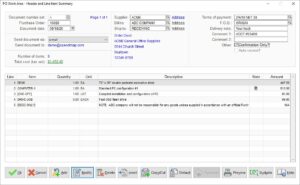Implementing an online purchase order system (PO system) is a crucial step for businesses looking to streamline their procurement processes and enhance efficiency. However, ensuring compliance with regulatory requirements and internal policies is essential for the successful adoption and operation of such systems. In this article, we will discuss best practices for online purchase order system implementation, focusing on strategies to maintain compliance with relevant laws, standards, and organisational guidelines.
Businesses can significantly benefit from adopting online purchase order systems, such as reducing paperwork, improving transparency, and enhancing collaboration with suppliers. To explore further, let’s delve into the best practices for implementing these systems while maintaining compliance.
Understanding Online Purchase Order Systems
Before diving into best practices, it’s essential to understand what online purchase order systems entail. Online purchase order systems, also known as PO software or purchasing order software, are digital platforms that enable businesses to create, manage, and track purchase orders electronically. These systems automate procurement processes, streamline workflows, and provide real-time visibility into purchasing activities.
Best Practices for Implementation
Implementing an online purchase order system requires careful planning, execution, and monitoring to ensure compliance. Here are some best practices to consider:
- Conduct a Compliance Assessment: Before selecting and implementing a PO system, conduct a thorough assessment of your organisation’s compliance requirements, including legal regulations, industry standards, and internal policies.
- Choose a Reliable Vendor: Select a reputable vendor with a proven track record of compliance and security in their PO software. Ensure that the vendor’s solution meets your organisation’s compliance needs and integrates seamlessly with existing systems.
- Customise Configuration: Customise the configuration of the PO system to align with your organisation’s compliance requirements, such as defining approval workflows, access controls, and audit trails.
- Provide Training and Support: Offer comprehensive training and support to users on how to use the PO system effectively while adhering to compliance protocols. Ensure that users understand their roles and responsibilities in maintaining compliance.
- Implement Regular Audits: Conduct regular audits of the PO system to monitor compliance, identify any potential issues or discrepancies, and take corrective actions promptly.
- Maintain Data Security: Implement robust data security measures to protect sensitive information stored and transmitted through the PO system. Encrypt data, enforce access controls, and regularly update security protocols to mitigate risks.
Conclusion
Implementing an online purchase order system is a strategic initiative for businesses seeking to improve procurement efficiency and transparency. However, ensuring compliance throughout the implementation process is paramount to mitigate risks and maintain trust with stakeholders. By following best practices such as conducting compliance assessments, choosing reliable vendors, customising configurations, providing training, conducting audits, and maintaining data security, organisations can successfully implement online purchase order systems while adhering to regulatory requirements and internal policies.

